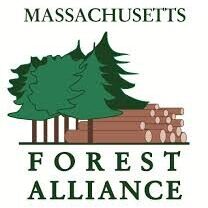| Becoming a Tree Farmer | Benefits of Forestry | Forestry Standards | Glossary |
Sustainable Forest Management
Sustainable forest management is an emerging concept for managing renewable forest resources. It’s a complex term that means different things to different people. When the United States was originally settled 400 years ago, our forests seemed inexhaustible. Little thought was given that we might eventually run out of wood, game, or other resources that forests provide. Trees were cut and cleared by the millions to provide land for farming as well as provide wood to build homes and heat them.
In the late 1800’s, as rampant logging spread westward to Oregon and Washington, concern began to be voiced that when those forests had been cut, we’d run out of wood. As a result of efforts by Gifford Pinchot and others, the practice of scientific forestry became established in the United States, concerned with growing trees for future generations to use for forest products to meet their needs for wood, paper and other materials. A major emphasis came to be placed on managing woodlands to provide a sustained yield of forest products.
As environmental consciousness grew during the 20th century, the concept of sustainability in forestry expanded to include the concept of sustaining and growing not just the valuable trees that are eventually harvested for forest products, but all the elements of our forests: clean water, productive soils, wildlife, fish, rare species, and non-commercial plants.
The Bruntland Commission on Sustainable Development’s definition of sustainable forestry was adopted by the International Earth Summit in Rio de Janeiro in 1992:
“Sustainable forestry means managing our forests to meet the needs of the present without compromising the ability of future generations to meet their own needs by practicing a land stewardship ethic which integrates the growing, nurturing and harvesting of trees for useful products with the conservation of soil, air, and water quality, and wildlife and fish habitat, and aesthetics.”
American Tree Farm System
The American Tree Farm System’s Standards and Guidelines for Tree Farm Certification are based upon the Rio de Janeiro definition of sustainable forestry. The goal is to encourage landowners to manage their woodlands to produce forest products while protecting our water, wildlife, fish and other environmental values.
Every Tree Farm is required to manage their woodland in a way that enhances not only the growth of trees, but also to protect, and if possible increase, water supplies, wildlife, fish and the myriad of non-commercial plants and species that depend upon forests for habitat and shelter. Tree Farmers are required to comply with state laws governing forestry
operations and use approved Best Management Practices to protect wetlands, streams and habitat.
On a practical basis, to do this in Massachusetts simply means following the state’s forestry and wetlands regulations when any harvesting or thinning is done on a Tree Farm, and practicing good forestry that provides for regeneration of species which are valuable not only for forest products but also for wildlife.
Den trees and snags should be retained whenever possible, and sufficient trees of valuable mast-producing species such as red and white oak and black cherry should be retained to provide seed for new generations of trees. On sensitive sites, logging or thinning operations should be scheduled to take advantage of dry or frozen soil conditions. Sufficient buffers and filter strips should be retained near wetlands and riparian areas (streambeds) to allow any runoff to be naturally filtered and cleaned by the undisturbed soil.
